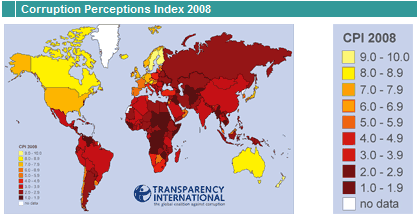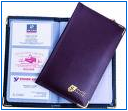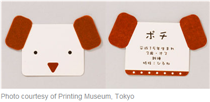In American culture, generally speaking, a TEAM is seen as a support group that allows individuals to be champions. To a greater or lesser degree, most individualistic cultures have a similar attitude. But what does a ‘team’ and teamworking mean to you? Can you help me please?
I’ll be lecturing at the end of this month at a conference on High Performing Global Teams and would love to be able to include your opinions. Please leave a comment for me on this blog – all comments greatly appreciated.
Originally got this via @raykwong through one of his Tweets. Interesting to read the attitudes of young Chinese shoppers and how global companies are looking to China to help them meet their turnover targets.
Read more.. »
Bribery & Corruption: how things get done around the world.

Since 1995, Transparency Internationl have produced a comparision of 180 countries by their perceived levels of corruption. Denmark is seen to be the least and Somalia the most corrupt currently. Check out your country’s perceived level of corruption.
Ask yourself these questions about corruption:
- What is it?
- Can you find reasons to justify it?
- Where do you think the money/gifts go?
- Why could people from a ‘corrupt’ society be suspicious of you?
Difficult questions to answer as your answers depend on the culture you are accustomed to. The trouble is, what is considered corruption in one country is perfectly acceptable in another. Also, we tend to ‘judge’ other countries by our own experiences and norms. When working in the Middle East, I was amazed to learn that those who come from a culture where ‘oiling the wheels’ (bribery) is comon place look suspiciously on those that do not adhere to that practice. They find it difficult to understand the motivation behind someone whose purpose is to carry out their job well – because it’s their job.
Read about my experiences below and check out the Corruption Perception Index to see how corrupt your country is perceived to be in relation to the rest of the world.
Read more.. »
An Emotional Appeal
Have you ever negotiated with an Italian? The experience I had was very much like attending an opera. Of course there is always a tragic story that you need to know before the negotiation starts. And the person you are negotiating with is the victim …. Unless you help. The overture starts and the scene is set. He rises before you, the room is dark, the people sombre. The first act will begin. The negotiator expresses his heartfelt sorrow over the situation, his despair; he shows you pictures of his children, and tells you how they will suffer if things do not work out for him in his work. Only you can help. He then goes into his second act with a higher-pitched voice, and his arms starting to swing as he shows you their agony through his voice and face and intonations. Then the negotiation story reaches a climax with his needs or plea to you, however outrageous it may be. He stops, checks to see if he has totally lost you, and then slowly lets you down to rest. The story is over. He sits down. He pulls out a cigarette and takes a long draw from it. He wipes his brow. And you are left to ponder his tragic case.”
Excerpt from Dr. Tracy Willen’s book
“International Business: A basic guide for women”
- Treat business card giving with more respect.
- Your card is your ambassador; a cheap and nasty one says the same about you. A poorly designed and badly printed card will help to make you appear cheap and nasty too. Invest in decent cards.
- If you don’t already, start to carry business cards everywhere you go.
- Carry spare business cards in your bag, briefcase, and even in the glove compartment of your car.
- Keep your cards in a particular pocket or the same place in your bag so that you can retrieve one without difficulty. Put all ‘incoming cards’ into a different pocket or a different place in your bag.
- Consider putting your photo on your card – it helps people remember you when they flick through their card collection. Rather than a boring head and shoulders shot, use something that shows you being active or doing your job.
- How about including on the back of your card, a brief summary of what results you or your company provides its customers? In other words, sell the benefit and emphasise the pain that you provide the solution to.
- Add “We met at…” This allows you or the recipient of the card to add details of your meeting. This can help your contacts remember you more clearly.
- If you perform a number of different job functions – have different cards. If you are self-employed, rather than including what you do – just use your name. Your card will have wider usage.
- Perhaps include on the back too. “Please keep this card for reference or pass on to a colleague”.
- If someone is particularly interesting when you meet them ask for two cards.
- Discard any out of date business cards and have new ones designed and printed.
Source: my thanks to Roy Shepard www.royspeaks.com and his excellent book “Meet, Greet & Prosper”
Find more information about cross cultural differences in the exchange of business cards by clicking on the following links:
Top Ten Tips on passing business cards with cultural fluency
Japan: everything you need to know about business card ‘meishi’ etiquette
U.S., Britain, Australia: Business Card Etiquette
The art of business card giving: an East West perspective
My previous two blogs have focused on the etiquette  and rituals
and rituals
surrounding (or not) the exchange of business cards in the Far East and in passing cards with cultural fluency. This blog focuses on How and when to offer your business card when you do business in the Anglo-Saxon countries.
It seems a really strange topic for someone in the UK to read/write about it because we almost don’t care and aren’t bothered – we just ‘toss’ them around and ’dish’ them out as and when required without much thought. It’s a very informal gesture – but – that informality has a MUCH deeper meaning…
Read more.. »
I got the following story from David Willoughby, a freelance writer now living in Tokyo:
Whilst in Japan, I happened to find myself seated next to another foreigner who recognised me from the gallery event we had both just attended. We chatted amicably for a while … A little while later, he stood up to leave. “If you like art,” he said to me, almost as an afterthought, “you might be interested in this.” And he nonchalantly tossed onto my table his business card on which he had biro’d the details of some upcoming event he was attending.
It wasn’t just the contrived nature of his networking spiel that made the exchange so unforgettable, it was in the small details. It was in the way in which he dealt his card onto the table rather than to me directly, minimising the chance that it might be rejected. It was in the fact that he waited until the final seconds of our encounter to produce it so that neither of us would have to endure the awkwardness of the moment. Before I had a chance to digest what was written on the card he had vanished.
The exchange would have been amusing for any watching Japanese who are, of course, far more comfortable with the use of business cards, or ‘meishi’. In the West, business cards are strictly for networking and careful consideration must be made about if and when to proffer the card – not so in Japan.
www.tokyoartbeat.com
Find more information about cross cultural differences in the exchange of business cards by clicking on the following links:
Top Ten Tips on passing business cards with cultural fluency
Japan: everything you need to know about business card ‘meishi’ etiquette
U.S., Britain, Australia: Business Card Etiquette
The art of business card giving: an East West perspective
Watch a Video on Chinese Business Etiquette
 In the global commercial world you can’t survive without a business card. A business card is the thing that consolidates ‘who you are’, gives you a ‘proper’ identity and tells the world that you are ‘open for business’. However, people around the world project different meanings on the exchange of cards doing it, therefore, in different ways.
In the global commercial world you can’t survive without a business card. A business card is the thing that consolidates ‘who you are’, gives you a ‘proper’ identity and tells the world that you are ‘open for business’. However, people around the world project different meanings on the exchange of cards doing it, therefore, in different ways.
In some cultures, the exchange symbolises the beginning of a relationship. The most ritualistic and sensitive to the practice of business card exchange are the Asian countries (Japan and Korea in particular). Perhaps the least are the British/US/Australians where NO significance whatsoever is attached to the exchange – it’s merely a function of giving someone your details – a reminder.
If you want to ensure that you don’t offend, read the Top Ten Tips below and the special section on Japan and the other on US/Britain. Instructive and comical videos included:
Read more.. »
For those in Asian countries, the exchanging of 
business cards is symbolic; it symbolises the beginning of a relationship. In Japan, meishi koukan is so important they even have an etiquette for it. If travelling to that part of the world, ensure that you have a vast amount of cards with you (read below to understand why) as people formally present cards at the beginning of every first meeting. This is exceedingly important if you are on an extended business trip.
Read the tips below to understand what is involved with business card etiquette and then watch the selection of videos that I’ve come across online that teach the novice how to exchange a card. If the card exchange goes badly, well… not much hope for any successful business relationship in the future!
Read more.. »
If we’re lucky our cross cultural marketing blunders will only cause great hilarity. When we’re not, they can cause offence and cost us money. Here are a few of the blunders that some ‘big boys’ made. With all their marketing budgets they can still get things wrong. Cross cultural communication runs deep so it is important to research carefully the Cultural Codes for specific products or brands and do some well-undertaken market research.
Below you will find a selection of marketing blunders:
Read more.. »



 and rituals
and rituals
 Hello, I'm Deborah Swallow and, for the last fifteen years, I've worked in over thirty countries addressing the complexities of people working internationally across multiple cultures, so individuals and organisations alike can gain an authentic competitive edge and win in international markets.
Hello, I'm Deborah Swallow and, for the last fifteen years, I've worked in over thirty countries addressing the complexities of people working internationally across multiple cultures, so individuals and organisations alike can gain an authentic competitive edge and win in international markets. 